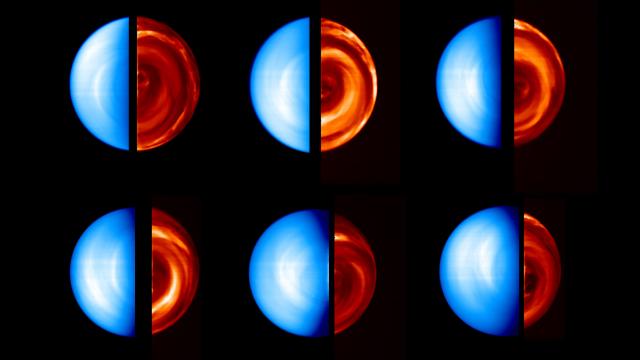This is Venus as you’ve never seen it before: on the left, the planet during the day captured in visible light, and on the right, the night side, captured using infrared light, both at the same time.
The images were captured by the Ultraviolet/Visible/Near-Infrared spectrometer (VIRTIS) on board ESA’s Venus Express spacecraft. The visible light images show the radiation that gets reflected by the planet’s atmosphere; the infrared part shows the thermal radiation bubbling up from sub-atmospheric depths. ESA explains in a little more detail:
Venus Express can resolve these structures by use (for the first time from orbit) of the so so-called ‘infrared windows’ present in the atmosphere of Venus. In fact, if observed at certain wavelengths, it is possible to detect thermal radiation leaking from the deepest atmospheric layers, revealing what lies beneath the dense cloud curtain situated at about 60 kilometres altitude.
In these images, brighter signals in the infrared data indicate that more radiation is coming from the lower layers. [ESA]
Picture: ESA/VIRTIS/INAF-IASF/Obs. de Paris-LESIA
